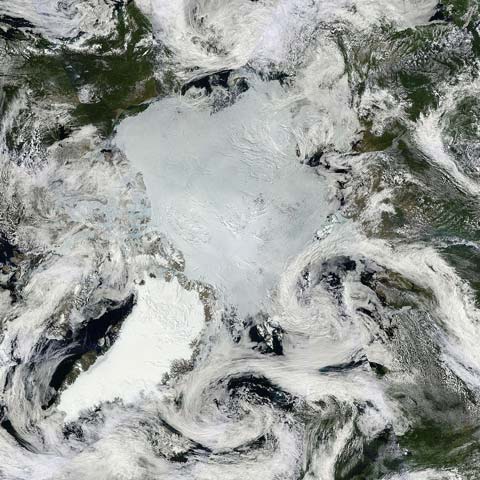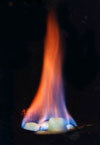 Reading this press release about a new paper in Palaeogeography, Palaeoclimatology, Palaeoecology spoiled my day. It might not be obvious to a casual reader just glancing through the morning news — but a couple of paragraphs leapt out at me:
Reading this press release about a new paper in Palaeogeography, Palaeoclimatology, Palaeoecology spoiled my day. It might not be obvious to a casual reader just glancing through the morning news — but a couple of paragraphs leapt out at me:
Atmospheric carbon dioxide concentrations recently reached 400 parts per million for the first time since the Pliocene Epoch, three million years ago. During this era, Arctic surface temperatures were 15-20 degrees Celsius warmer than today’s surface temperatures.
Ballantyne’s findings suggest that much of the surface warming likely was due to ice-free conditions in the Arctic. That finding matches estimates of land temperatures in the Arctic during the same time. This suggests that atmospheric carbon dioxide concentrations of 400 ppm may be sufficient to greatly reduce the spatial extent and seasonal persistence of Arctic sea ice.
In other words, losing Arctic sea ice brings huge warming to the lands around the Arctic Ocean. This is extremely bad news for a number of reasons:
Continue reading “Arctic sea ice time bomb ticking: the bang’s gonna be huge”


 What makes this event significant, is the role Arctic sea ice plays as a reflector of solar energy. Ice is white and therefore reflects a large part of incoming sunlight back out to space. But where there is no ice, dark ocean water absorbs most of the sunlight and thus heats up. The less ice there is, the more the water heats up, melting more ice. This
What makes this event significant, is the role Arctic sea ice plays as a reflector of solar energy. Ice is white and therefore reflects a large part of incoming sunlight back out to space. But where there is no ice, dark ocean water absorbs most of the sunlight and thus heats up. The less ice there is, the more the water heats up, melting more ice. This  The latest estimate of
The latest estimate of  Methane release from the permafrost and hydrates under the East Siberian Shelf in autumn 2009 was the highest ever recorded, the leader of the International Siberian Shelf Study (ISSS), Igor Semiletov, has
Methane release from the permafrost and hydrates under the East Siberian Shelf in autumn 2009 was the highest ever recorded, the leader of the International Siberian Shelf Study (ISSS), Igor Semiletov, has